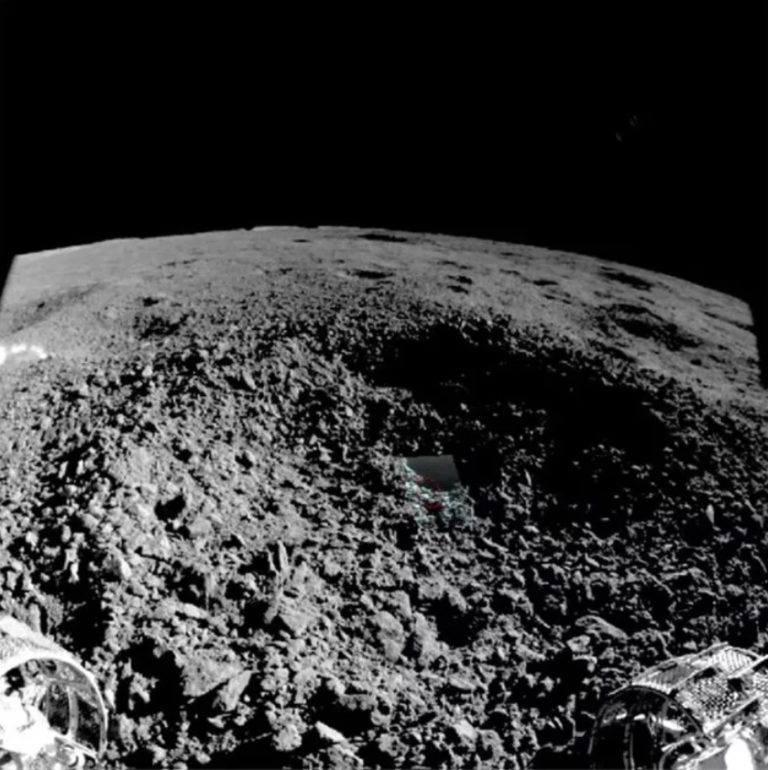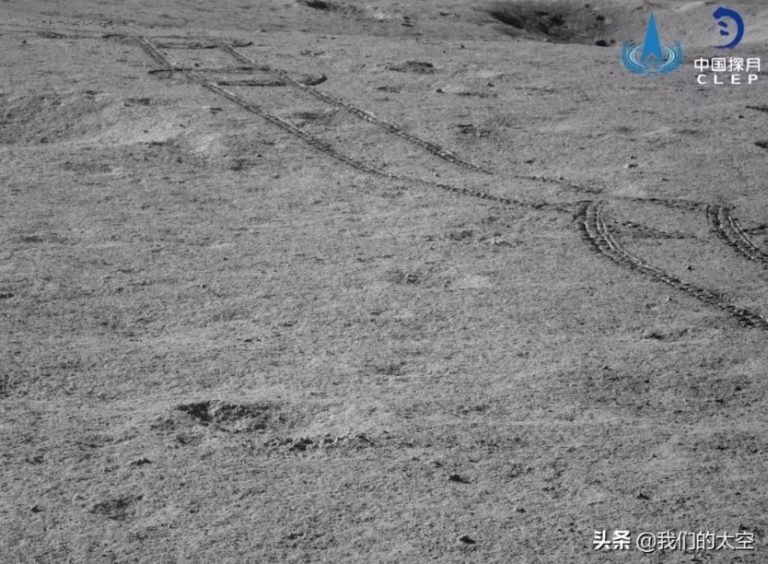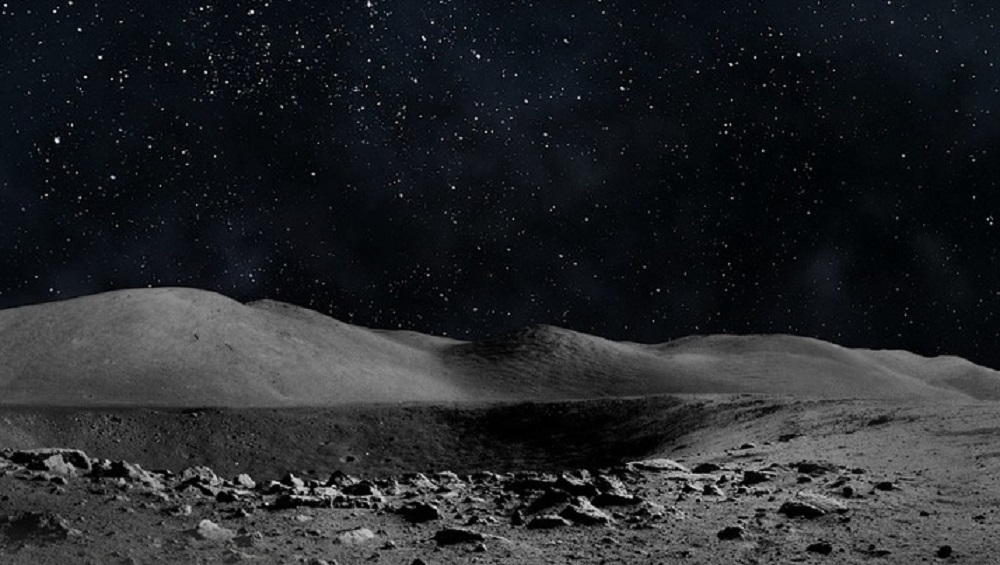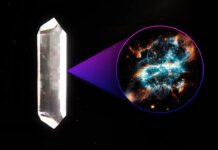The Chinese moon vehicle Jadehase 2 has sent images of an “unknown substance” to Earth, which was discovered in a small crater on the back of the moon. Since July the find has fascinated the scientific community.
The team of the Chinese Chang’e-4 mission to the back of the moon, which also controls the lunar vehicle Jadehase 2, now discovered and observed a possibly “gelatinous” material. It is said to have significantly changed its shape and location on the lunar soil until Jadehasen 2’s second voyage to this crater. However, so far the first investigation was due to too many shadows on the pictures as unsatisfactory.
The latest images were taken by the obstacle avoidance camera, with which the rover was carefully steered just above the edge of the approximately two-meter-wide crater in which the unusual substance is to be found. A front wheel should already hover over the edge, although there was a risk that material of the edge could slip.

The red and green tints in the image center of the center of the crater are measured values of a spectrometer for the visible and the area of the near infrared (VNIS). The light scattered or reflected by a material can provide information about the chemical composition of the substance using the VNIS instrument, regardless of its own color.
Although the second approximation took place in August, the results were not transmitted until the beginning of September and published a few days ago.
While it is too early to pinpoint the substance, researchers like lunar scholar Clive Neal of the University of Notre Dame speculate that the substance may contain fragments of minerals that have been clumped into high-velocity lunar surfaces to form a glass-like substance , This hypothesis would fit in the locality because the substance is in a crater.
So far, the Jade hare 2 has already covered almost 285 meters on the moon, since he landed successfully soft on January 2 on the far side of the moon. The Chinese mission ended its ninth lunar day on September 5th. The tenth lunar day should begin on schedule on September 22, since a lunar day lasts about two weeks.

Source: rt.com






